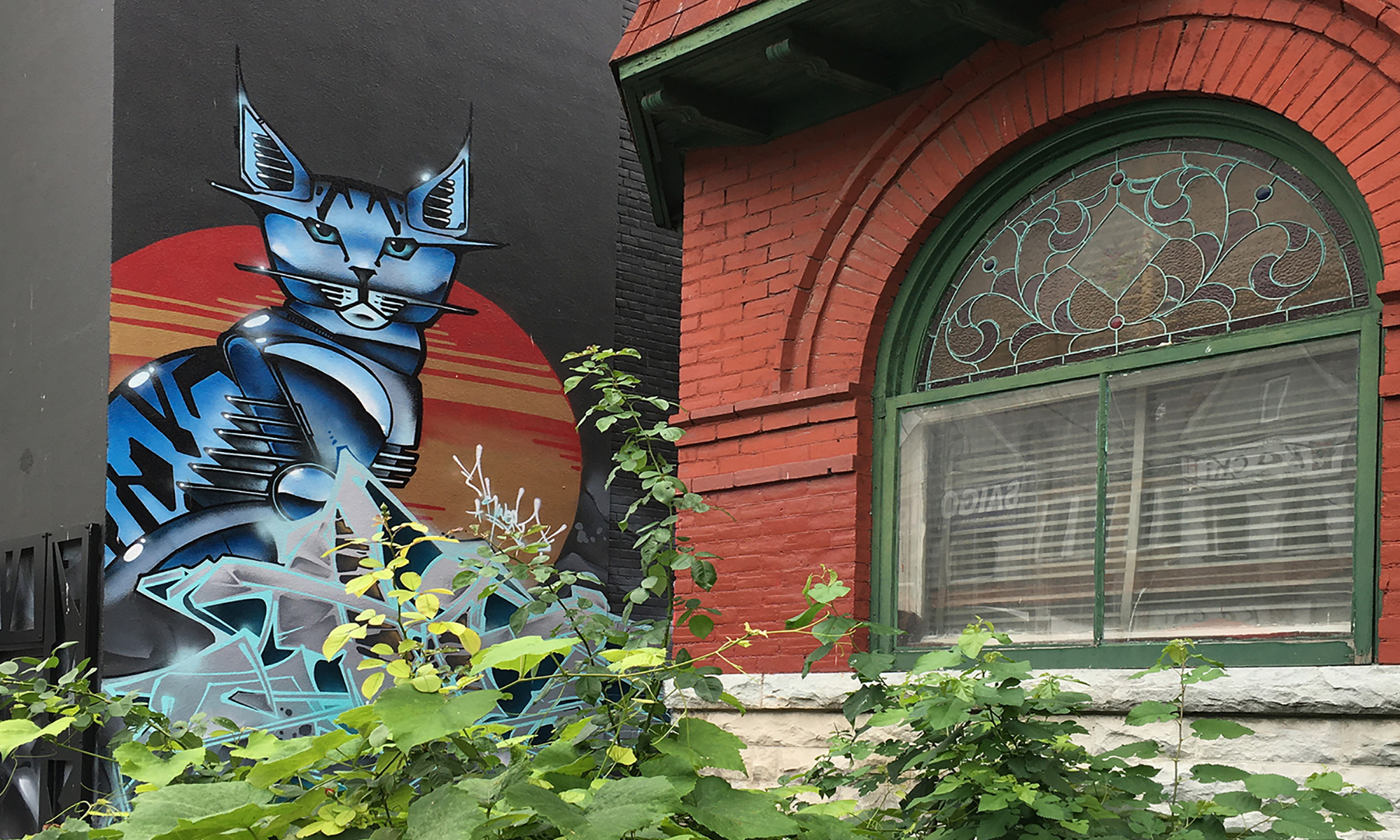In addition to Jewish enterprises, Jewish congregations established themselves in Kensington Market and began to reform the physical landscape of the neighborhood. For example, the Kiever congregation was first established by Ukrainian Jews residing in The Ward in 1912. Following the settlement trend of the Jewish community in Toronto, they relocated their synagogue to the North side of Bellevue Square in 1917 in two adjoining houses. As the number of Kiever congregants increased, the demand for a larger and grander house of worship was met in 1927, when the congregation raised enough funds to demolish the two houses, and build the Keiver Synagogue.[1] The same story is shared by the Minsker congregation, which rapidly grew after relocating to Kensington from The Ward, and reshaped the Kensington landscape by demolishing two houses to build the Minsker Synagogue on St. Andrew Street.[2]
The integration of Jewish synagogues into the Kensington Market region was one of the many lasting physical changes to the Kensington Market neighborhood that occurred in the 1910s and 1920s. The construction of the Minsker and Kiever synagogues solidified the immigrant influence upon Kensington Market. Until this point, the physical landscape of Kensington was defined by the Victorian style houses and Christian institutions. The Jewish immigrants brought new facades to the homes, now including storefronts, and a new identity to the neighborhood. By incorporating Jewish business enterprises they had etched into the Kensington landscape the architecture, customs, and lifestyles of Eastern Europe. The Byzantine domes adorned with the “Mogen David,” star of David, on the Kiever synagogue now sat in the same spot Belle Vue was built half a century before. [3] This signifies the great transition at the heart of the 1910s and 1920s, the creation of a unique immigrant mixed use community that shaped the physical landscape and identity of Kensington. The Jewish settlement in the 1910s and 1920s would set the precedent for many more decades of immigrant settlement and impact on Kensington Market.
[1] Doug. Taylor, Villages Within : an Irreverent History of Toronto and a Respectful Guide to the St. Andrew’s Market, the Kings West District, the Kensington Market, and Queen Street West (New York: iUniverse, 2010), 114.
[2] Ibid. 152.
[3] Sheldon. Levitt, Treasures of a People : the Synagogues of Canada (Toronto: Lester & Orpen Dennys, 1985) 66.
